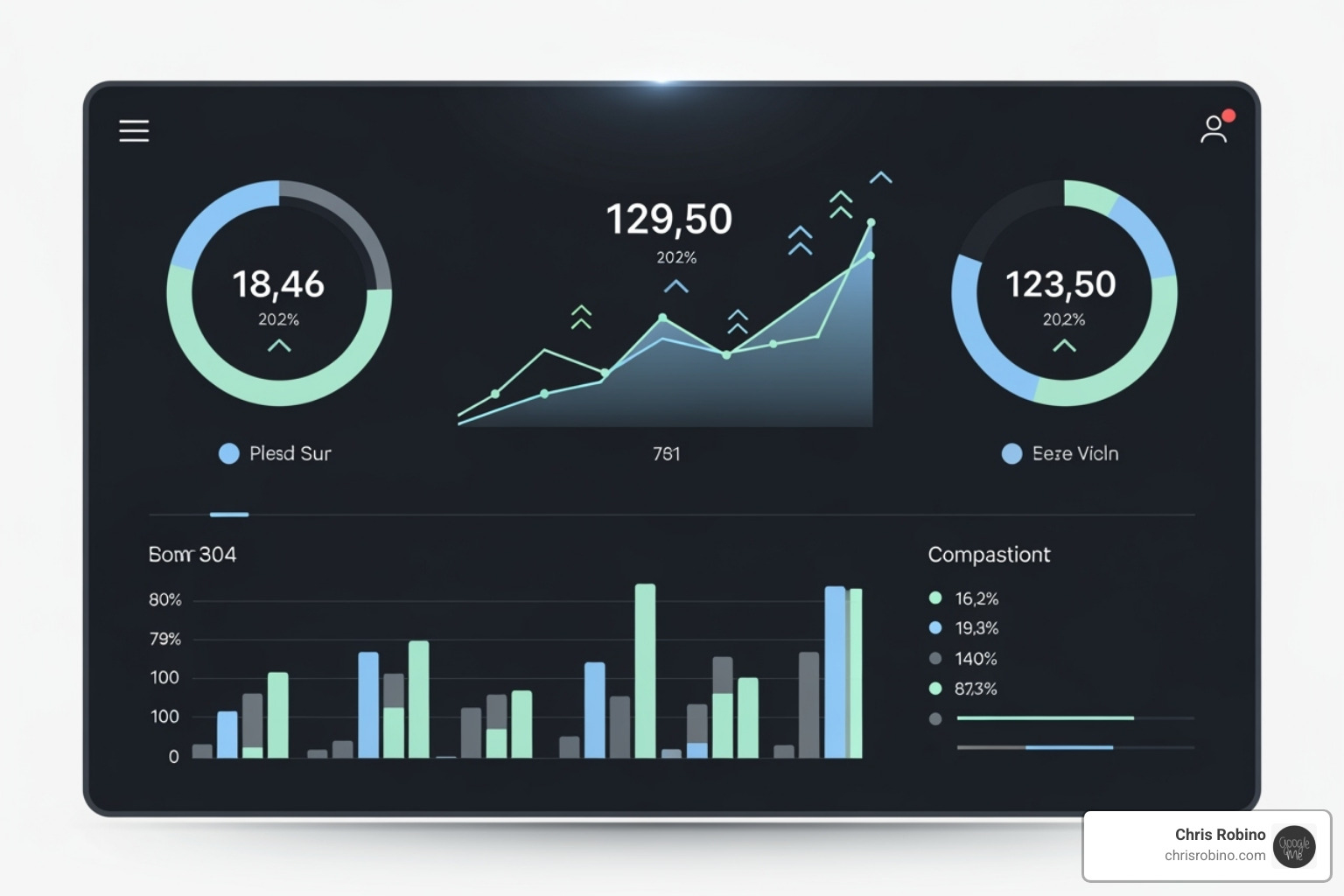What Is Enterprise SEO and Why It Matters for Large Companies
Enterprise SEO is the discipline of improving organic visibility for large, complex organizations with thousands of pages, multiple brands, global audiences, and many stakeholders. It blends technical excellence, scalable content operations, governance, and rigorous measurement so that search becomes a dependable growth channel rather than a series of one-off wins.
Core pillars of enterprise SEO:
- Search-ready architecture: Information architecture that mirrors user intent and minimizes crawl waste.
- Technical excellence at scale: Fast, stable, indexable pages with clean rendering and smart canonical, pagination, and parameter handling.
- Content engine: Repeatable workflows to create, improve, and retire content across languages, products, and formats.
- Authority and trust: Reputation, expertise, and signals that reinforce credibility to users and search engines.
- Measurement and governance: Clear KPIs, ownership, and change control to protect rankings and accelerate impact.
Why it matters: For large organizations, small inefficiencies multiply across thousands of URLs and teams. Enterprise SEO turns complexity into advantage by aligning product, engineering, content, and analytics around a single objective: showing up with the most helpful result for the right query, at the right time.

From signals to strategic advantage
Winning at scale requires unifying the signals that matter:
- Query and intent trends: What audiences ask and how they express needs across the journey.
- Site performance and rendering: Core Web Vitals, JavaScript hydration, and server/edge behavior.
- Crawl and index data: Logs, sitemaps, canonicalization, and coverage reports to manage findy.
- Content coverage and freshness: Where you are thin, outdated, or absent for high-value intents.
- Entity and schema signals: Structured data that clarifies meaning and eligibility for improved results.
- Location and international nuances: Store pages, service areas, hreflang, and regional expectations.
Connecting these datasets provides a prioritized roadmap: fix the highest-impact technical issues first, align architecture with intent, systematize content refreshes, and build internal links that concentrate authority where it counts.
The four tiers of enterprise SEO analytics
- Descriptive: What happened?
- Track organic sessions, impressions, clicks, rankings, and coverage status across segments (brand vs. non-brand, product vs. content, markets, and devices).
- Diagnostic: Why did it happen?
- Tie performance shifts to releases, content changes, SERP feature volatility, link acquisition, or crawl/indexing changes.
- Predictive: What will happen?
- Forecast traffic and revenue by scenario (e.g., improving Core Web Vitals, expanding topic coverage, or resolving duplication) and plan resources accordingly.
- Prescriptive: What should we do?
- Prioritize actions by expected impact and effort: backlog grooming, sprint-ready tickets, and templates for rapid deployment. At enterprise scale, the win is consistent execution on the highest-value items.
Open uping Growth: The Core Enterprise SEO Plays

Large companies win in search by making the fundamentals scalable and defensible.
Information architecture and intent mapping
- Map queries to journeys (awareness, consideration, decision, post-purchase) and organize content accordingly.
- Consolidate overlapping pages, eliminate thin/duplicate content, and ensure each URL has a unique purpose.
- Build robust hub-and-spoke structures for priority topics and product categories.
Technical SEO at scale
- Performance: Optimize Core Web Vitals, reduce JavaScript bloat, leverage server-side rendering or hybrid rendering, and deploy edge caching.
- Crawl budget and index management: Maintain clean sitemaps, canonical tags, and robots directives; prevent infinite crawl paths from faceted navigation; use parameter rules and pagination best practices.
- Stability: Version-controlled SEO configs, automated tests for meta tags and structured data, and controlled redirects with rollback plans.
- Internationalization: Hreflang, regional content parity, and country-specific URL structures that avoid duplication.
Programmatic templates and content
- Use high-quality templates for product, category, and location pages that scale without sacrificing usefulness.
- Guard against doorway pages by ensuring each page adds value beyond boilerplate.
- Establish a refresh cadence to combat content decay and maintain topical authority.
Internal linking and authority flow
- Automate internal linking to surface priority pages, using contextual links and navigation patterns that reflect user intent.
- Create linkable assets (research, how-to libraries, interactive tools) to attract editorial mentions and strengthen domain-level authority.
- Follow search engine best practices for internal linking to ensure maximum crawl efficiency.
SERP features and structured data
- Implement schema for products, reviews, FAQs, how-to, events, and organization details to improve click-through and eligibility for improved results.
- Optimize titles, descriptions, and media to match query intent, including long-tail and entity-focused queries.
Local and multi-location SEO
- Maintain accurate NAP details, location pages with unique value (hours, services, inventory where applicable), and consistent citations.
- Use structured data for locations and services, and build a review management playbook to strengthen trust signals.
Reputation, trust, and E-E-A-T signals
- Showcase expertise: author bylines, credentials, and clear editorial standards.
- Strengthen trust: transparent policies, helpful customer support pages, and visible safety/security cues.
- Manage user-generated content quality with moderation and spam controls.
On-site search and merchandising synergy
- Align site search data with SEO opportunities; refine filters and synonyms to match real language users employ.
- Ensure inventory status and pricing updates don’t create soft 404s or stale experiences.
Key capabilities to build into your enterprise SEO stack

- Intuitive visibility: Role-based dashboards for executives, product teams, engineering, and content operations that translate complex data into clear narratives.
- Real-time monitoring: Release monitoring, uptime, rendering checks, structured data validation, and alerting for critical changes.
- Seamless integrations: Connect analytics, logs, CMS, product feeds, and data warehouses to create a single source of truth.
- Scalability: Handle millions of URLs, multiple brands, and international markets without re-architecting the stack.
- AI-assisted prioritization: Use models to cluster queries by intent, detect content decay, and surface high-impact technical and content opportunities.
- User-friendly workflows: Ticket templates, acceptance criteria, and automated QA so non-SEO teams can ship SEO-safe changes.
- Governance automation: Policy-as-code for robots rules, redirects, and metadata; pre-commit checks in CI/CD; rollback mechanisms.
- Experimentation: SEO-friendly A/B and holdout tests for titles, internal links, and templates with robust measurement protocols.
How to prove ROI of enterprise SEO
Tie outcomes to commercial impact and operational efficiency:
- Revenue and margin: Incremental non-brand traffic, conversion rate, average order value, assisted conversions, and attributable revenue.
- Content ROI: Traffic and conversions per article or template; decay curves and refresh lift.
- Technical ROI: Improvements in Core Web Vitals, index coverage, and crawl efficiency; change failure rate reduction.
- Market expansion: International share of voice, localized rankings, and local pack visibility for priority markets.
- Speed to value: Time-to-index for new content, time-to-fix for critical issues, and lead time for changes.
Methodology
- Baselines: Lock pre-change baselines at page type, market, and device levels.
- Incrementality: Use control groups where possible and adjust for seasonality and macro trends.
- Forecast vs. actual: Maintain forecast models and compare realized uplift to refine future plans.
- Formula: ROI = (Net gain attributable to SEO / Total SEO investment) × 100. Include engineering, content, and tooling to reflect true costs.
Operationalizing Enterprise SEO

To scale impact, build an operating model that makes SEO a habit across teams.
Governance and ownership
- Define roles: SEO lead (strategy and prioritization), product manager (roadmap and stakeholder alignment), engineering lead (implementation), content lead (editorial operations), data analyst (measurement and forecasting), and legal/compliance (risk controls).
- Establish a change advisory process for redirects, templates, navigation, and site architecture.
- Create policy docs for robots rules, canonical logic, structured data types, and hreflang patterns.
90-day enterprise SEO plan
- Days 1–30: Audit technical foundations, map intents to architecture, identify quick wins (e.g., canonical conflicts, broken internal links, sitemap coverage), and define KPIs.
- Days 31–60: Ship high-impact technical fixes, finalize topic clusters for priority categories, standardize metadata and schema templates, and implement monitoring and alerting.
- Days 61–90: Publish/refactor core hubs and top templates, roll out internal linking automations, pilot SEO experiments, and formalize governance in CI/CD.
Change management and enablement
- Train engineering on SEO-safe patterns and add pre-commit checks to catch regressions before deployment.
- Provide content playbooks with examples of helpful, experience-led writing and clear guidelines for tone, sources, and compliance.
- Build a migration checklist for rebrands, consolidations, or platform changes, including staging tests, phased rollouts, and post-launch validation.
Risk management and quality
- Release discipline: Guardrails for meta changes, redirects, and indexability flags; immediate rollback if critical metrics regress.
- Migrations and site merges: One-to-one redirect mapping, canonical and hreflang updates, structured data parity, and traffic monitoring by page type.
- Security and reliability: Avoid exposing staging in search; protect confidential paths; ensure 4xx/5xx errors don’t cascade into deindexation.
Advanced tactics
- Edge SEO: Implement redirects, headers, and A/B tests at the edge where appropriate for speed and control.
- Log-file analysis: Validate crawl allocation, detect bottlenecks, and prioritize findy of money pages.
- Parameter governance: Whitelist relevant parameters, consolidate tracking noise, and deploy canonicalization patterns.
- AI guardrails: Use AI to scale research and drafts, with human review for accuracy, usefulness, and brand alignment.
Measurement and cadence
- Weekly: Coverage, indexation, and release health; alerts triage and hotfixes.
- Biweekly: Sprint planning across SEO, product, and engineering; status on roadmap items and experiments.
- Monthly: Business review of traffic, revenue, and priority initiatives; variance analysis vs. forecast.
- Quarterly: Strategy refresh on markets, topics, and templates; re-baseline KPIs and update the model based on learnings.
Sustainable roadmap
- Maintain an SEO backlog segmented by technical, content, and authority initiatives, each scored by impact, effort, and risk.
- Set quarterly objectives tied to business outcomes (e.g., reduce non-indexed priority URLs by X%, grow non-brand conversions by Y%).
- Scale what works: Convert proven patterns into templates, components, and checklists to accelerate future wins.
Enterprise SEO is not a one-time project; it is an operating system for how your organization finds, builds, and maintains helpful experiences. With clear governance, scalable workflows, and disciplined measurement, large companies can transform organic search into a compounding growth engine.
